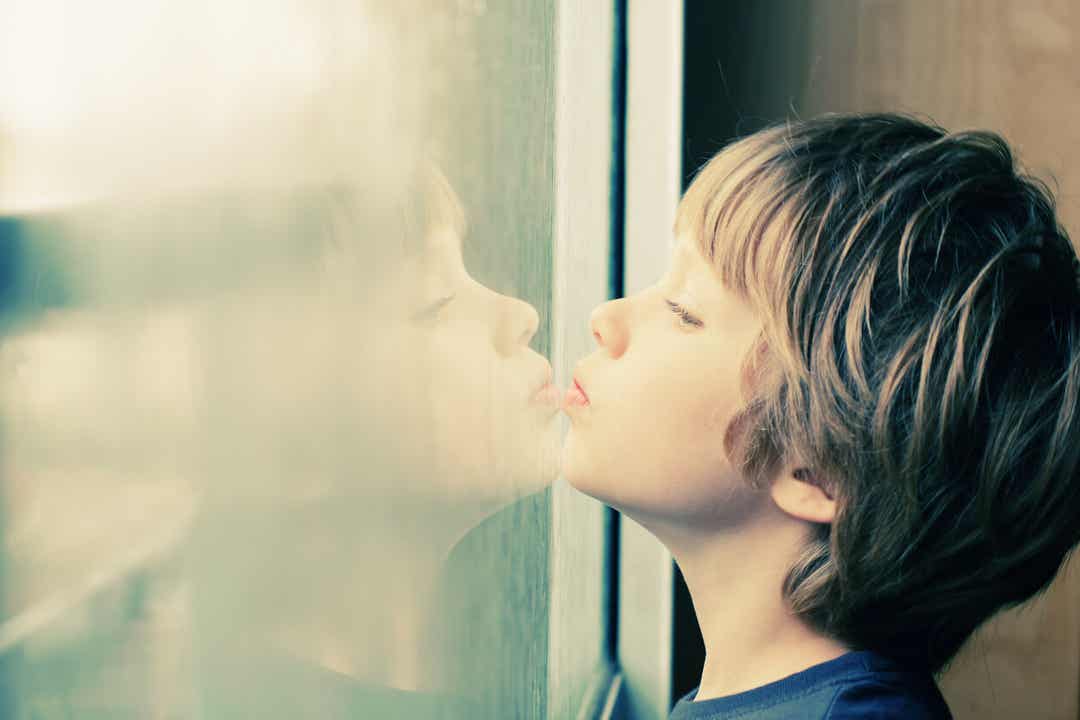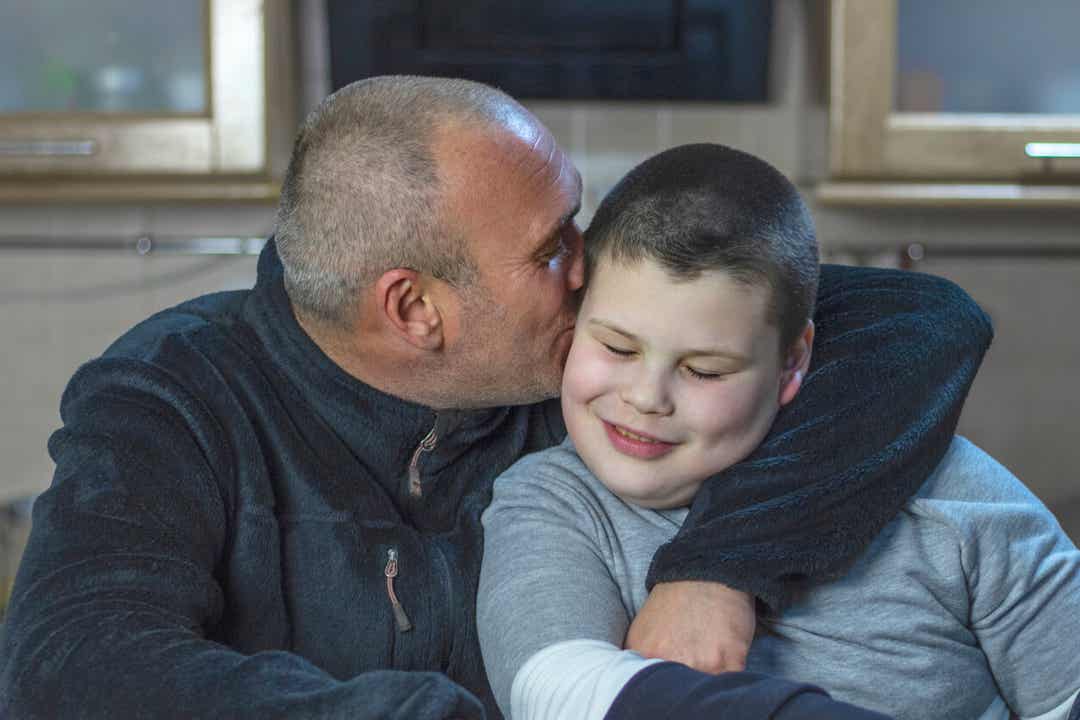Retinal Scans Can Identify Autism in Children

Knowing how to identify autism in children has been one of the great concerns of parents over the years. This disorder, which affects the nervous system, isn’t always easy to recognize, as it presents itself in different types and degrees that can go unnoticed.
Therefore, scientist Benny Zee of the University of Hong Kong decided to take a step forward. He created a method that uses artificial intelligence for two main purposes. First, to detect autism in children, and second, to estimate the risk of suffering from this disorder.
For Benny Zee, one of the biggest drawbacks in the treatment given to people with autism lies in late diagnosis. Therefore, his method helps prevent or reduce the deficiencies in the ability to communicate and relate to the environment that people with autism may experience.
In fact, the aforementioned scientist even expressed the following to the media in his country: “The importance of starting early intervention is that they’re still growing, they’re still developing. So there’s a higher probability of success”.
How does the innovative method to identify autism in children work?

This fantastic invention is considered to be an additional tool for the diagnosis made by specialists, thus generating greater support in their assertions. It’s a very valuable contribution in accordance with the history of parental behavior.
The effectiveness of Benny Zee’s method to identify autism
The relevant point of a study to measure its usefulness on a larger scale is the effectiveness it’s able to achieve. Therefore, according to what’s a study published in the medical journal EClinicalMedicine reveals, the accuracy of the method is above 90 percent.
Scientists performed the tests on 70 children, 46 of whom had autism spectrum disorder (ASD). The other 24 individuals were part of a control group. Ultimately, the effectiveness was 96.7 percent.
Another interesting aspect is that the analysis group included a six-year-old child so that the method would be significant at an early age. At the same time, the average age of most of the participants was 13 years.
A discovery to curb skepticism
Work to help people diagnosed with autism spectrum disorder tends to slow down because of parental skepticism. Many parents refuse to accept that their children have this condition, even completely dismissing what doctors say.
With that in mind, Benny Zee’s method would provide irrefutable proof for parents and would accelerate treatment so that the social development of the little ones could improve considerably.
Learn more: Autism and The Intestinal Microbiome
The relationship between the retina and autism

In essence, several investigations over the years have shown that autism is related to alterations in the central nervous system. For its part, the retina is a sensory membrane; in other words, an extension of the nervous system.
With this in mind, experts paid more attention to comparing the retinas of people with and without autism spectrum disorder. As a result, they noted repeating patterns in the retina. And it was these changes in the optic nerve fiber layer that Benny Zee incorporated into his program.
Finally, retinal scanning may also be the window for advances with another degree of automation in both early detection and the determination of risk factors regarding other abnormalities originating in the central nervous system. For example, Parkinson’s, Alzheimer’s, among others.
Knowing how to identify autism in children has been one of the great concerns of parents over the years. This disorder, which affects the nervous system, isn’t always easy to recognize, as it presents itself in different types and degrees that can go unnoticed.
Therefore, scientist Benny Zee of the University of Hong Kong decided to take a step forward. He created a method that uses artificial intelligence for two main purposes. First, to detect autism in children, and second, to estimate the risk of suffering from this disorder.
For Benny Zee, one of the biggest drawbacks in the treatment given to people with autism lies in late diagnosis. Therefore, his method helps prevent or reduce the deficiencies in the ability to communicate and relate to the environment that people with autism may experience.
In fact, the aforementioned scientist even expressed the following to the media in his country: “The importance of starting early intervention is that they’re still growing, they’re still developing. So there’s a higher probability of success”.
How does the innovative method to identify autism in children work?

This fantastic invention is considered to be an additional tool for the diagnosis made by specialists, thus generating greater support in their assertions. It’s a very valuable contribution in accordance with the history of parental behavior.
The effectiveness of Benny Zee’s method to identify autism
The relevant point of a study to measure its usefulness on a larger scale is the effectiveness it’s able to achieve. Therefore, according to what’s a study published in the medical journal EClinicalMedicine reveals, the accuracy of the method is above 90 percent.
Scientists performed the tests on 70 children, 46 of whom had autism spectrum disorder (ASD). The other 24 individuals were part of a control group. Ultimately, the effectiveness was 96.7 percent.
Another interesting aspect is that the analysis group included a six-year-old child so that the method would be significant at an early age. At the same time, the average age of most of the participants was 13 years.
A discovery to curb skepticism
Work to help people diagnosed with autism spectrum disorder tends to slow down because of parental skepticism. Many parents refuse to accept that their children have this condition, even completely dismissing what doctors say.
With that in mind, Benny Zee’s method would provide irrefutable proof for parents and would accelerate treatment so that the social development of the little ones could improve considerably.
Learn more: Autism and The Intestinal Microbiome
The relationship between the retina and autism

In essence, several investigations over the years have shown that autism is related to alterations in the central nervous system. For its part, the retina is a sensory membrane; in other words, an extension of the nervous system.
With this in mind, experts paid more attention to comparing the retinas of people with and without autism spectrum disorder. As a result, they noted repeating patterns in the retina. And it was these changes in the optic nerve fiber layer that Benny Zee incorporated into his program.
Finally, retinal scanning may also be the window for advances with another degree of automation in both early detection and the determination of risk factors regarding other abnormalities originating in the central nervous system. For example, Parkinson’s, Alzheimer’s, among others.
This text is provided for informational purposes only and does not replace consultation with a professional. If in doubt, consult your specialist.








